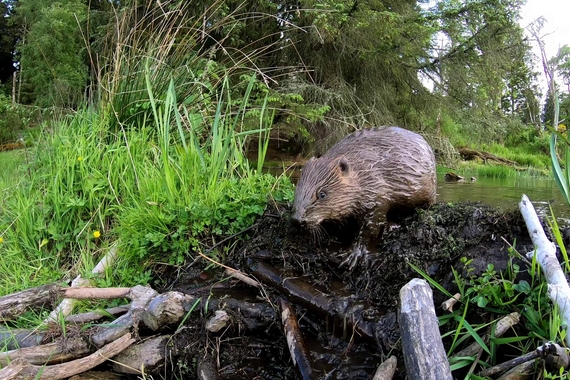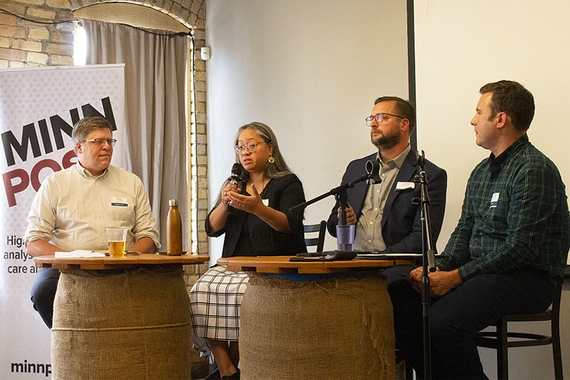Reservation Preservation
“I really wanted to develop a dissertation process that was rooted in Minnesota,” says Laura Matson, who earned her PhD in Geography, Environment & Society in October of 2018.
“I had been really interested in geography prior to attending law school,” she says. Her path of studying law and geography has been unique, as she developed a personalized joint degree program through the University of Minnesota’s Law School and the Department of Geography, Environment & Society (GES).
Matson completed her undergraduate degree at Sarah Lawrence College with a focus in international studies and music. In 2010, Matson began law school at the University of Minnesota. Her entry point was through human rights law, which then led her to explore domestic cases, and finally veered into the world of tribal jurisdiction. It wasn’t until 2012 that she took a tribal courts course in law school. This course, Matson explains, “opened my eyes to some of the ongoing, lingering issues in federal Indian law and ways in which tribes are developing individual legal systems.” That same year, Matson went on to study natural resource policies and water regulation through her joint degree program.
Along with her dissertation research, Matson attended voluntary monthly meetings with Great Lakes Indian Fish and Wildlife Commission (GLIFWC) and developed relationships with tribal resource managers in the Great Lakes region. “It was through the dissertation research,” says Matson, “that I started to become connected with the community.”
Re-examining Tribal Impact
“I wanted to go into the job market with an area of expertise that I cared about and a sense of what I could offer to a specific area of law,” Matson explains. Through the Department of Geography, Environment & Society, Matson pursued expertise in tribal jurisdiction and environmental law.
Matson’s dissertation aims to explore the collaborative relationships between tribes and state governments in order to positively impact the environment. Her dissertation focuses on the expansion of tribal jurisdiction over resource policy and water regulation in the Great Lakes region.
Matson's dissertation looks at how litigation over tribal treaty rights in the Great Lakes region developed particular jurisdictional relationships between the states and tribes and obligated the states to collectively manage shared resources in the ceded territories with the tribes. These jurisdictional relationships have become a springboard for understanding tribal impacts on a range of issues, including contestations over state water policies. Minnesota is currently the only state to have a water quality standard designed to protect a single non-human species: wild rice. Matson says, “I focus on how the tribes interacted with the process and shaped the process but also how they contributed to the scientific record and development of the data.”
Matson explores the debate regarding the replacement of crude oil pipelines through Minnesota and Wisconsin. Line 3 extends through Northern Minnesota and Line 5 through Wisconsin, which run through the ceded territories and in some cases overlap with tribal reservations. “[Tribes] have the capacity to intervene with the processes in a different way than a special interest group,” Matson notes, “so I looked at how their interventions had shaped the process and continuously demanded that the state agencies look more broadly at the scope of environmental impacts.”
Her dissertation ends by looking at different strategies that tribes have used to respond more broadly to threats to resources throughout the ceded territories, which tribal resource managers have likened to “death by a thousand cuts.”
Path to Preservation
Matson would like to see states become more receptive to tribes’ jurisdictional authority and develop a more nuanced and holistic understanding of environmental issues. Matson notes that the problem is how policies “segment environmental harms so that they don’t reflect the reality of how these harms travel through ecosystems.”
Matson defended her dissertation in October of 2018 and now works as a postdoctoral research fellow with Kawe Gidaa-naanaagadawendaamin Manoomin (First, We Must Consider Manoomin). This is an interdisciplinary research collaboration between the University of Minnesota and a number of tribes in the region, aimed to address social and biophysical impacts on wild rice ecosystems. “Through intensive collaboration with tribal partners,” says Matson, “the project aims to develop best practices for research with tribes, improve relationships between tribes and the University, and produce research that is useful for tribal communities.”
While there is a long way to go in terms of tribal jurisdiction, Matson says, “The heightened attention and respect for tribal jurisdiction will have a greater outcome for the environment.”
This story was written by an undergraduate student in CLA.



